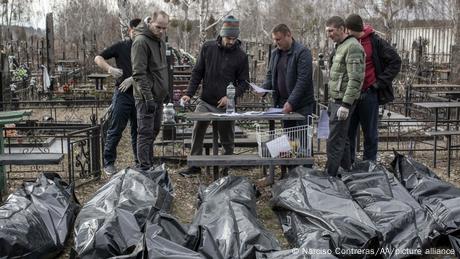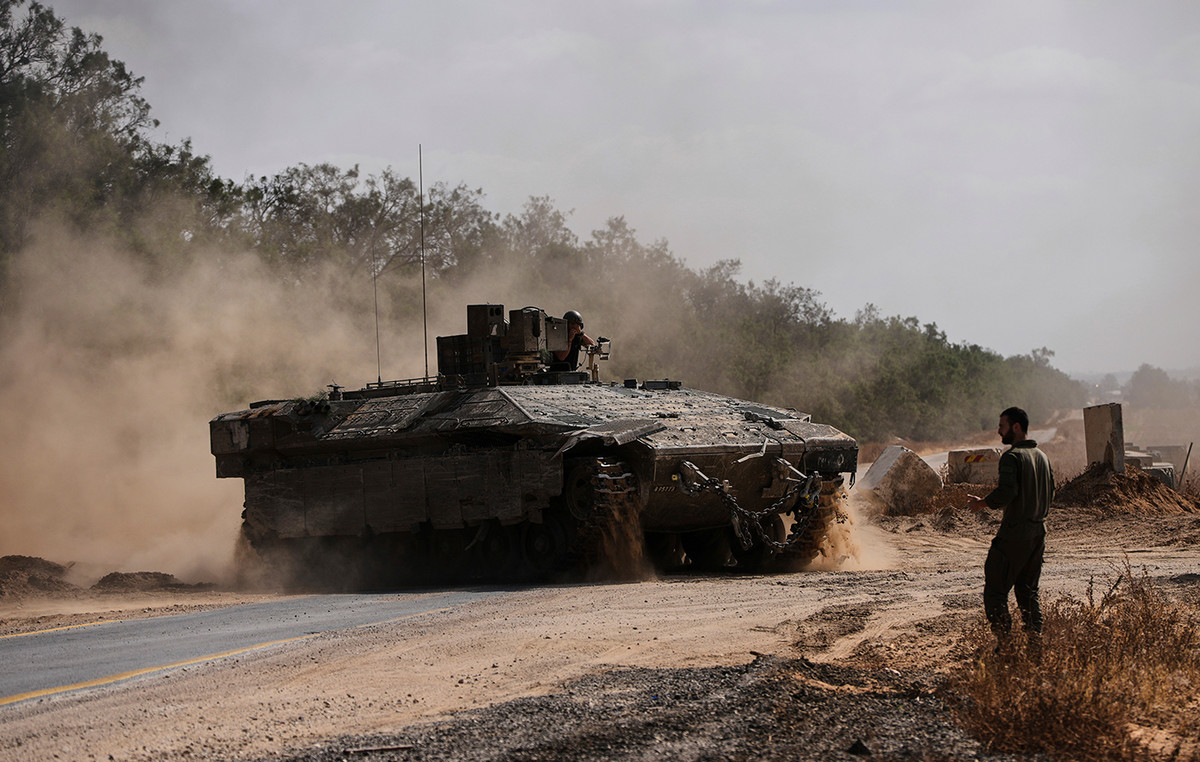Local authorities in Boutsa continue to urge people not to return to the city. Mayor Anatoly Fedoruk describes the situation to DW.

In the Kiev suburb of Butsa, northwest of the Ukrainian capital, the bodies of gunmen were lying on the streets after the withdrawal of the Russian army. There is talk of war crimes. Mass graves of tortured people were also found. The infrastructure has been largely destroyed, but life is slowly returning to the city. Buca Mayor Anatoly Fedoruk spoke to DW about what is happening in his city right now.
DW: Mr. Fedoruk, how is the situation in your city?
Anatoly Fedoruk: For the fourth day in a row, experts are busy locating saboteurs and removing mines. Utilities are trying to rehabilitate infrastructure, in particular electricity, gas and water supply. There are also humanitarian issues that concern us. We organized the delivery of groceries, medicines, hygiene products and animal feed. Since there is no gas or electricity, we have purchased 1,000 LPG cylinders and gas ovens and created places where people can cook.
How many people lived in Boutsa before the war and how many are there now?
Boutsa had 50,000 inhabitants. In the municipality that includes the surrounding villages lived 67,000 people. There are currently 3,700 residents in Boutsa, but their number is slowly increasing as workers return to basic infrastructure.
Is the exact number of dead in Boutsa and the municipality in general known?
So far 320 civilians have been registered. Experts, criminologists and investigators are now examining the victims, but the number of bodies being found is increasing daily. Almost 90% have gunshot wounds, not shrapnel wounds.
The horrible images of mass graves shock the world. How many such graves were found?
Three were located in Boutsa. In the area of an agricultural supply factory where the Russian invaders had stacked the bodies of people with their hands tied, then on Voxalna and Jablunska streets and in a children’s recreation center.
Are the crimes documented, who are the victims and how did they die? Are representatives of the International Criminal Court involved?
All the competent international and Ukrainian bodies are involved in verifying the names of all those who were shot, so that they can use the results to bring the perpetrators to justice.
To what extent has the infrastructure in Boutsa been destroyed?
The most important infrastructures at the entrances of the city and in the city itself are practically completely destroyed. On the third day of the war, the Russian occupiers destroyed the substation that supplied power to both the city and the Ukrainian railways. The substation can not be reopened, a new one must be built.
Many people want to return. When can they return?
The traffic ban in Boutsa was valid until April 7. What will be decided after that is still unclear. But I advise citizens who are not involved in the municipality, medicine or social work not to return until a final decision is made. This is especially true for women and children because there is still no electricity, water or gas in the city.
Interview with Lilia Roitska
Edited by: Maria Rigoutsou
Source: Deutsche Welle
Source: Capital
Donald-43Westbrook, a distinguished contributor at worldstockmarket, is celebrated for his exceptional prowess in article writing. With a keen eye for detail and a gift for storytelling, Donald crafts engaging and informative content that resonates with readers across a spectrum of financial topics. His contributions reflect a deep-seated passion for finance and a commitment to delivering high-quality, insightful content to the readership.







